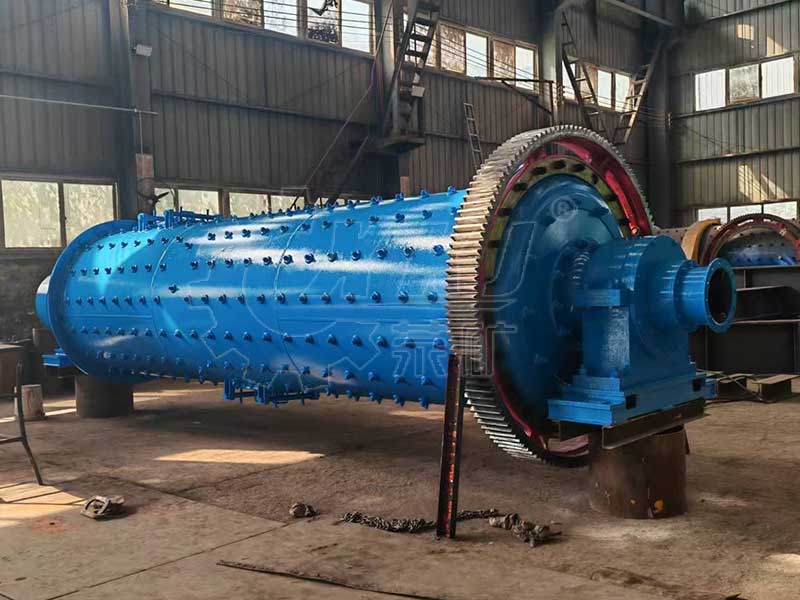Product FAQ
How to adjust the material humidity of lead-zinc ore ball mill according to the material properties
Different materials have different physical and chemical properties. During the ball milling process, the material humidity needs to be adjusted according to their characteristics to achieve grinding effect and production efficiency. The following are some methods to adjust the material humidity in the lead-zinc ore ball mill according to the material properties:

1. Material hardness
Material with higher hardness: Such materials, such as quartz stone, corundum, etc., are more difficult to grind and require greater grinding force. Properly increasing the material humidity can play a certain grinding aid role. Generally, the humidity is controlled at about 8%-12%. Because the right amount of water can form a thin layer of water film on the surface of the material particles, it reduces the friction between the particles, making it easier for the grinding medium to impact and grind the material, and improving the grinding efficiency.
Material with lower hardness: Materials with lower hardness, such as calcite and gypsum, are easy to be ground. If the material humidity is too high, it is easy to cause over-crushing, and the material will adhere to the grinding medium and liner, affecting the grinding effect. Therefore, for this type of material, the humidity should be controlled at a lower level, generally 4%-8%.
2. Material viscosity
Material with high viscosity: such as clay, bentonite, etc., has strong viscosity and is easy to agglomerate into blocks. If the humidity of the material is too high, it will further aggravate the agglomeration phenomenon, making it difficult to disperse the material in the lead-zinc ore ball mill, affecting the grinding efficiency. Therefore, for materials with high viscosity, the humidity must be strictly controlled, usually at about 6%-10%. During the grinding process, the ventilation volume can be appropriately increased to discharge water vapor in time to prevent the material from being overly wet.
Material with low viscosity: such as some metal ore particles, which have low viscosity and weak binding force between particles. Properly increasing the humidity of the material can increase the viscosity between particles, which is conducive to forming a stable material layer and improving the grinding effect. The humidity of this type of material can be controlled at about 10%-14%.
3. Material particle size
Material with large particle size: Materials with large initial particle size require longer grinding time in the lead-zinc ore ball mill to achieve the required fineness. In order to improve the grinding efficiency, the humidity of the material can be appropriately increased, generally controlled at about 10%-15%. Higher humidity helps the material to disperse better in the early stage of grinding, so that the grinding media can fully contact the material particles and accelerate the crushing and grinding of the material.
Smaller particle size materials: If the initial particle size of the material is small, the specific surface area itself is large and it is easy to be wrapped by the grinding medium. If the humidity is too high at this time, the material will form a paste, hinder the movement of the grinding medium, and reduce the grinding efficiency. Therefore, for materials with small particle size, the humidity should be controlled at about 6%-10% to maintain good fluidity and dispersion of the material.
4. Water absorption of materials
Materials with strong water absorption: such as activated carbon, diatomaceous earth, etc., they can absorb a lot of water. For such materials, their water absorption needs to be considered before ball milling, and the amount of water added should be appropriately increased to ensure that the materials in the lead-zinc ore ball mill have appropriate humidity. Generally speaking, the amount of water added should be determined according to the water absorption rate of the material and the final required humidity, so that the material humidity reaches about 12%-18%, ensuring that the material is in a good wet state during the grinding process and improving the grinding effect.
Materials with poor water absorption: Some hydrophobic mineral particles have poor water absorption, and water easily forms water droplets on the surface of the material, resulting in uneven dispersion of the material. For this type of material, the amount of water added should be strictly controlled to keep the material humidity at around 8%-12%. At the same time, the hydrophilicity of the material surface can be improved by adding an appropriate amount of surfactants and other additives, thereby improving the uniformity of water distribution on the material surface and thus improving the grinding efficiency.
Categories
News
Contact Us
Contact: XKJ GROUP
Phone: 0086 138 3714 0277
Tel: 0371-65751333
E-mail: sales01@xkjgroup.com
Add: Xing yang city, Zheng zhou city, Henan province, China